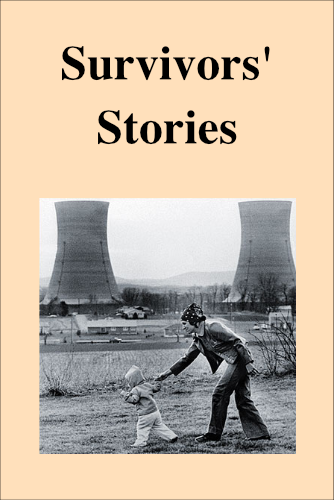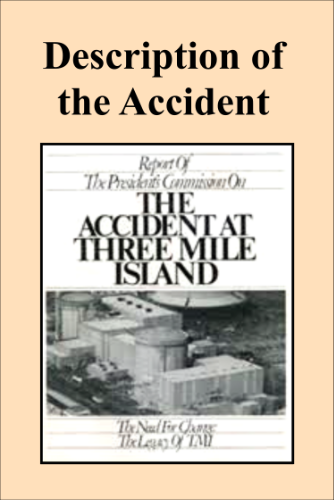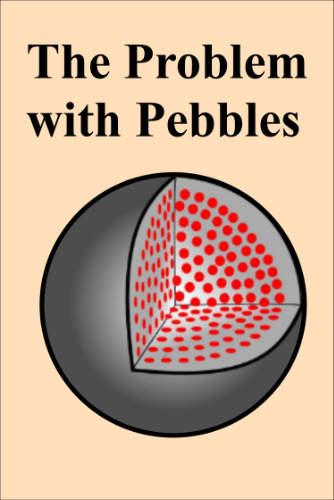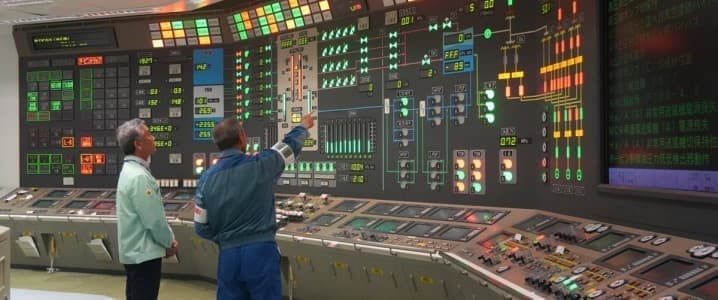How Holtec International became an expanding (and controversial) nuclear power
Following its start as a producer of nuclear waste storage canisters, Holtec International has built an empire around mothballed nuclear power plants and as-yet incomplete nuclear initiatives. The firm's history of overpromising and underdelivery raises a question: Is this who we should trust with the future of nuclear energy?
On a 90-degree afternoon in July 2014, the governor, the mayor, and the local state senator gathered before 200 people at Camden, New Jersey's Broadway Terminal along the Delaware River to celebrate an impending economic miracle. A planned technology center would bring pioneering nuclear technology and hundreds of new jobs to a dismal waterfront known for its unemployment and poverty.
State Sen. Donald Norcross, among those on a stage decorated with an eight-foot-tall banner bearing the red and black logo of Holtec International, said the company behind the deal was “a titan of energy.”
Holtec CEO Krishna Singh could locate his company’s nuclear technology center anywhere, not just in the United States but in the world, Norcross said, “And he chose Camden.”
The 47-acre campus would be used to develop a new kind of nuclear reactor that “cannot under any condition go out of control,” Singh said.
Now, the promised local miracle of economic progress seems, at most, incremental. There is no nuclear power plant assembly line as initially envisioned by Singh. His promised next-generation nuclear reactors remain conceptual a decade later, so far not progressing beyond the drawing board.
Singh made public pronouncements about providing a “path out of hereditary poverty” and a “pathway to the middle class” for Camden residents. The Camden facility would employ some 2,000 laborers and 1,000 professional staff in its first five years, the company said in promotional materials. But it ultimately hired far fewer locals than initially suggested.


In a statement in response to questions for this article, Holtec said that it has exceeded every obligation outlined in its contractual agreement with the state related to its Camden site. Also, the company noted that a court had rejected the state of New Jersey's view that Holtec had fallen short of commitments, restoring funds that had been withheld based on claims of noncompliance.
New Jersey officials did, however, abandon a partnership with Holtec to build a job training center. Holtec said the state’s move “turned its back on the people of one of America's poorest cities. The company has continued to invest in workforce development initiatives and to create meaningful opportunities for residents, advancing its mission to contribute to the city's long-term economic revitalization.”
Documents filed in state and federal courts, records from regulatory agencies, and interviews with officials, activists, ex-employees, and industry analysts show that the Camden project was not a Holtec anomaly. Across its ventures, announcements of grand undertakings have been followed by under-delivery and controversy, as Holtec, a company primarily known for making concrete nuclear waste containers, succeeded in promoting itself as a high-tech leader in nuclear power generation and the decommissioning of nuclear power plants.
Since launching the Krishna P. Singh Technology Campus in Camden, Holtec has expanded aggressively into the decommissioning of shuttered nuclear power plants and a government-backed attempt to revive the largely dormant US nuclear energy sector. Holtec’s business strategy has relied in part on acquiring old nuclear plants and tapping into trust funds that plant operators had paid to the government for the eventual decommissioning of those plants. In some cases, Holtec has then reversed course and tried to restart aging reactors. Internationally, Holtec has positioned itself as spearheading US efforts to expand nuclear power generation in Ukraine and South Korea.
The stakes of that claim are higher now. In Ukraine, Holtec’s principal state partner, Energoatom, has become the focus of a sweeping corruption inquiry alleging years of inflated contracts, illicit payments and political interference in the very projects Holtec helped build at Chernobyl — prompting new scrutiny of the environment in which those projects took shape.
Although many of its projects are either unfinished or less than initially portrayed, Holtec now controls the fate of multiple nuclear power plants across the United States. The company that didn't fully deliver on initial promises about a technology center in Camden (see sidebar) has been entrusted with billions of dollars from ratepayer-funded decommissioning trust funds, responsibility for some of the nation's most hazardous nuclear sites, and permission to re-start a closed nuclear reactor—even though Holtec had never operated a nuclear power plant.
Now, Holtec plans to go public in a planned stock offering that Singh told Barron’s could value his company at $10 billion. Singh hopes to sell shares worth 20 percent of the company’s total value in a stock offering that aims to raise capital for an expansion of its oft-stated plans to build small modular reactors (SMRs), a next-generation technology that, for Holtec, remains in the design stage and has not yet been licensed.
The move to go public entrusts yet more financial and public faith in a company whose grand undertakings have often been followed by controversy and under-delivery.


Capitalizing on the failure of Yucca Mountain
In Nye County, Nevada, 100 miles northwest of Las Vegas, a ridge made of hardened volcanic ash is the site of a five-mile-long tunnel designed to store used nuclear power plant fuel and other nuclear waste. The site cost the US government $19 billion to study and build. That the Yucca Mountain tunnel sits empty is a testament to the passion of Nevadans' opposition to the site, manifest in meetings, petitions, and demonstrations. It represents the sense of humor of the state government, which established an exorbitant special tax district around the mountain it called “Bullfrog County.” It reflects the power of the political coalition that turned a 1987 federal policy that aimed to deposit all of America's commercial nuclear waste at the site into a permanent political quagmire.
But it's also a monument to the entrepreneurial zeal of Krishna Pal Singh, who launched a company that specialized in making concrete containers for plants to store their used nuclear fuel on site. As the challenge to Yucca Mountain stalled US efforts to create the used nuclear fuel repository authorized by the 1982 Nuclear Waste Policy Act, Singh positioned his recently founded company, Holtec International, to capitalize on a growing crisis: Without that national repository, used nuclear fuel was accumulating at America's nuclear plants.

Without Yucca Mountain, nuclear power plants increasingly depended on containers to store their used fuel. As no viable alternative to Yucca Mountain has arisen, America's 54 nuclear power plants, each with tons of waste that will be radioactive for millennia, had nowhere to store it—even though the US government was legally required to provide a repository.
When spent nuclear fuel is removed from reactors, it is placed in pools of water to cool for a period that lasts at least several years. But as no national repository was built, reactor cooling pools reached capacity across the country and used fuel storage containers—many of them Holtec-made—became a common feature at nuclear plants.
Today, Singh oversees a company that has expanded far beyond building nuclear fuel storage casks. Holtec has won contracts to control nuclear plants and manage billions of dollars in federally mandated decommissioning trust funds. However, this aggressive expansion has been overshadowed by serious concerns: 24-year-old bribery allegations (see sidebar) and regulatory violations related to employee radiation exposure risk, quality control in spent fuel transportation and storage systems, and inadequate security. Activists, public officials, and nuclear experts question whether a company with no prior experience in building, operating, or maintaining nuclear power plants—one that has attracted sustained controversy—should be positioned to lead a significant part of America's nuclear future
Born in 1947 in Patna, India, Singh earned his bachelor's degree in mechanical engineering from the Bihar Institute of Technology (now known as the Birsa Institute of Technology Sindri) in Dhanbad, Jharkhand, in 1967 and completed his doctorate in mechanical engineering at the University of Pennsylvania in 1972.
At the time, Singh's specialized knowledge of pressure vessels and heat exchangers made him valuable to employers. He spent the next decade designing components for nuclear power plants.
In 1986, at age 39, Singh founded Holtec International (the name combines “Holistic” and “Technologies”). It began by designing racks that allow plants to pack more nuclear waste into the cooling pools for used nuclear fuel. Next, the company turned to manufacturing large sealed canisters for longer-term radioactive waste storage.


By the 2010s, the high cost of running aging nuclear power plants relative to natural gas-fired plants and renewable energy installations led to permanent shutdowns of some nuclear power plants.
In 2018, Holtec formed a subsidiary called Holtec Decommissioning International and began acquiring shuttered nuclear plants outright. Rather than simply selling storage systems to utilities, Holtec would now buy entire reactor sites, take control of their decommissioning trust funds, and assume responsibility for dismantling the facilities and managing the radioactive waste stored there.
Each closed nuclear plant came with a substantial decommissioning trust fund—money collected from ratepayers over decades to pay for eventual cleanup. Holtec claimed it could complete the decommissioning work much faster than utilities had planned, promising 10- to 12-year timelines instead of the 60 years allowed by regulators. Also, there was a glittering prospect: Holtec could potentially keep whatever remained in the trust funds after decommissioning was complete.
“There is a public benefit to completing decommissioning in 10 years rather than waiting decades. If a company has the expertise, efficiency, and capability to do this while maintaining safety, that is a value-added proposition,” former Nuclear Regulatory Commission (NRC) chairman Gregory Jaczko said in an interview with the Bulletin. “However, the key question remains: Do we have the regulatory authority to ensure it is done safely?”
For Jaczko and other observers skeptical of Holtec's plans, one important question centers on whether Holtec has been set up in a way that will allow it to be held accountable should things go wrong.
Singh has set up his business via a web of subsidiaries spanning 17 countries across four continents. The company has created dozens of separate entities, from Holtec Orrvilon in Hong Kong to operations in Britain and Ukraine, plus numerous limited liability companies (LLCs) clustered in New Jersey, Delaware, and Florida. These are set up in complex structures, whereby entities often own each other in nested arrangements, with one LLC either a shareholder or a subsidiary of the other.
This structure is perhaps most clearly seen in Holtec's nuclear decommissioning business. Each closed plant—the Palisades Nuclear Plant in Michigan, the Indian Point plant in New York, and the Pilgrim Nuclear Power Station in Massachusetts—exists within its own special-purpose LLC. These subsidiaries control billions of dollars in decommissioning trust funds while maintaining limited legal liability, according to state attorneys general from Massachusetts and New York.



During a 2022 congressional hearing on the decommissioning of nuclear power plants, public officials expressed alarm at the strategy of assigning responsibility for cleaning up nuclear waste sites to special-purpose LLCs with no prior business or assets other than those associated with the plant itself.
For example, Holtec International does not appear as the licensee for the Pilgrim plant that its prior owner, Entergy Nuclear Generation Company, shut down in 2019. Instead, the plant is now licensed to independent companies created expressly for this purpose.
“They (Holtec) are not the licensee at the site,” Seth Schofield, with the Massachusetts attorney general's office, testified during the hearing. “They are not legally responsible for what happens at the site. The entities that are legally responsible for what happens at the site are two LLCs. They are the licensees. And the only asset those licensees have is the trust fund. Hence, that is a big source of our risk.”
Jaczko noted that there was no corporate entity positioned to provide a financial backstop if something went wrong.
In response to questions about these concerns, the NRC said that it “conducts its work as transparently as possible, including public meetings as needed, and the agency posts its conclusions in public documents.” The commission considered requests for hearings submitted by state officials in the Pilgrim and Indian Point decommissioning license transfers but concluded an evidentiary hearing was not warranted, the NRC statement said. The Nuclear Regulatory Commission’s monitoring and enforcement cover the life of a plant, “ensuring adequate decommissioning funding will be available, guaranteeing the owner has ultimate responsibility to complete the work, regardless of cost overruns,” the agency said in a statement to the Bulletin.
Jaczko, however, is less sanguine.
“This structure is far less transparent and accountable than what we typically see for power plant ownership,” he said. “It appears that there is no corporate entity with sufficient resources to provide capital and cover operating expenses in the event of revenue losses, whether due to accidents or plant problems requiring extended shutdowns.”
Rather than defend the LLC setup or suggest that Holtec International would offer legal guarantees, Singh responded in US Senate testimony by offering his word. He cited a project in Ukraine, where Holtec supplied containment technology for the country's nuclear waste, as evidence that Holtec's reputation in the international marketplace was so strong that the company did not need to issue formal guarantees for commitments made by its subsidiaries.
“I will reiterate, I will reiterate, that Holtec International will stand behind the commitments made by its operating subsidiaries. The damage to us reputationally would be enormous if we walked away from a project without finishing. It is not just money. Our company has enormous goodwill and value, reputational worth in the world marketplace. We cannot afford to, for one project, maybe costing us a hundred million dollars, we will not walk away. Absolutely not,” he said. “I don't think any future CEO of the company would either. This company has an enormous value as an enterprise that is trusted around the world. We did Chernobyl, you may or may not know. We did a nuclear waste facility in Ukraine that was considered an impossible job. We finished it. We turned the key over to the Ukrainian government.”
But facts on the ground are more complex and less completely positive than this characterization of Holtec’s efforts in Ukraine suggests.

A tangled tale: Holtec in Ukraine
No nuclear power plant is more famous than Chernobyl, the site of the 1986 meltdown, explosion, and massive radiation release that killed between thousands and hundreds of thousands of people, depending on whose estimates one accepts. In Ukraine, the site remains radioactive politically for reasons unrelated to energetic particles or electromagnetic waves.
The containment work that Holtec has turned into a calling card is famous within Ukraine as ground zero for some of the country’s most notorious corruption scandals (which, to be clear, did not touch Holtec). Singh may have told the Senate committee that he “did Chernobyl.” Anti-corruption prosecutors allege officials and contractors working alongside Holtec did a number on Chernobyl. The US company’s Ukrainian partners, public official overseers, and subcontractors were caught up in public inquiries into allegations of embezzlement, fraud, bid rigging, bribery, and other alleged misconduct. Energoatom, the government agency behind the project, has denied corruption allegations and accused a parliamentary critic of “false media attacks.”
Anti-corruption officials in Ukraine in early November announced a $100 million corruption scandal that forced out the senior leadership of Energoatom, the principal state partner with Holtec at Chernobyl. The officials describe corruption and a lack of oversight at the agency—during periods that overlapped Holtec’s work. As of press time, allegations had not included Holtec itself.
Prosecutors and auditors described kickbacks of between 10 and 15 percent, inflated equipment prices, questionable subcontracting, and suspect relationships between Energoatom officials and Chernobyl exclusion zone contractors.
Holtec’s promotional materials continue to present its Ukraine record as evidence of competence and reliability. Ukrainian authorities, meanwhile, continue collecting evidence to support allegations that agencies overseeing the U.S. company were compromised.
Publicly available information does not indicate that Holtec has been formally accused of wrongdoing in the Ukrainian corruption cases. In response to questions from the Bulletin, Holtec has emphasized that it acted ethically and was not informed of any misconduct surrounding the projects. The company stated it was “not involved in the hiring, management, or payment of local contractors.”
According to Holtec’s and the Ukrainian government’s project documents, the company served as the prime contractor for what is known as the Interim Spent Nuclear Fuel Dry Storage Facility, or ISF-2, which is designed to hold spent fuel from undamaged reactors at Chernobyl, which had remained in operation until 2000. Holtec hired YUTEM-Engineeringas its principal subcontractor. That is, Holtec had a direct, if unwitting, role in hiring and managing a key local company whose owner had financial ties to what official Ukrainian investigations said was a notorious corruption network.
Holtec's Ukrainian venture began in the mid-2000s, when the country confronted a growing crisis over its nuclear waste. Each year, Ukraine paid Russia approximately $200 million to dispose of the spent fuel from its 15 reactors. American officials grew increasingly worried about this dependency, diplomatic cables released by WikiLeaks show. In leaked cables, those officials touted Holtec as a means to pry Ukraine from Russia’s nuclear embrace. The geopolitical urgency also had a practical side: Holtec might help secure waste in the still-hazardous Chernobyl Exclusion Zone.
Ukraine decided to make the depopulated land around the old plant into a general-purpose nuclear waste storage site serving both the old plant and its spent fuel, as well as spent fuel from power plants elsewhere in the country.
The most visually prominent of the three separate projects is a massive arch-shaped sarcophagus that contains the old, damaged portion of the Chernobyl complex. But there are two lesser-known facilities, and that’s where Holtec supplied management, technical know-how, and equipment. Holtec was the main contractor for what was called the Interim Storage Facility-2 for spent fuel from Chernobyl reactors. And it supplied equipment and engineering support for the Centralized Spent Fuel Storage Facility, built to store nuclear waste from elsewhere.

In its prime contractor role, Holtec was to hire, manage, and pay subcontractors doing on-the-ground civil engineering work, according to records from the Chernobyl management agency, Ukraine’s public spending audit agency (hyperlined document in Ukrainian), and other documents.
Holtec’s work was supported by international heavyweights: the International Atomic Energy Agency and the European Bank for Reconstruction and Development. The company nonetheless found itself in the company of controversial figures.
Holtec’s main local partner for the ISF-2 project was the firm YUTEM-Engineering, whose owner had ties to Maksym Mykytas, the head of a construction empire. According to official records, Holtec hired, managed, and paid YUTEM on that project.
Anti-corruption agencies have accused Mykytas of masterminding multimillion-dollar collusion and bribery schemes related to, among other things, the repository for waste from outside Chernobyl. On that centralized fuel storage project, Holtec was not responsible for hiring or managing YUTEM, which became mired in bid-rigging and bribery scandals.
Evidence connects YUTEM to a wider alleged criminal enterprise that’s been the subject of multiple high-profile investigations of alleged embezzlement, fraud, bribery, and bid-rigging. The Bulletin traced these ties via multiple records, including Mykyta’s asset declaration from 2017, when he was a member of Ukraine’s parliament, showing he received money or equity worth approximately $75,000 in a transaction with YUTEM's owner.

Mykytas was not just any politician. According to Ukraine's National Anti-Corruption Bureau, he was the alleged mastermind of a sprawling network of companies used to embezzle state funds. Investigators would eventually accuse Mykytas of orchestrating multiple schemes, including a bribery plot causing what investigators said was approximately $37 million in fraudulent overpayments for claimed work for the nationwide spent fuel storage repository.
Mykytas, for his part, was arrested and detained in 2020 while boarding a flight from Kiev to London. He turned state's evidence and revealed a network of alleged collaborators that included high-ranking officials and business associates.
Eventually, investigations into Mykytas caused progress on the nationwide storage facility to stall, though all the sites at Chernobyl eventually passed testing and licensing phases. By then, Holtec and Ukrainian officials were announcing another ambitious nuclear effort: a commitment to build 20 small modular reactors across the war-torn country. The announcement came despite Holtec having no US-approved reactor design and no experience building or running nuclear plants, and despite Russia's ongoing campaign of bombing energy infrastructure, once again pitting a grand vision against a complex and hazardous reality.

In November, Ukraine’s Energy Ministry announced it had held discussions with Holtec about building a plant for hydrogen and ammonia, the conversion of coal-fired power plants to “micro” nuclear reactors, and plans to convert Ukraine’s steel to nuclear power.
In December, Energoatom, Ukraine’s state-owned nuclear company, announced it was discussing with Holtec the idea of building a factory for SMR components to make Ukraine a regional center for the production and export of nuclear technologies.
In January, Energoatom announced its officials had held a video conference with Singh to discuss ideas such as a new factory for producing parts for SMRs, a joint Energoatom-Holtec engineering and training center, and “implementation of SMR-300 technology in Ukraine,” according to an agency announcement.
However, some Ukrainian nuclear power experts have expressed worry about making plans to build any type of new nuclear power plant in a country where energy infrastructure is actively targeted and where the largest nuclear power plant in Europe, Zaporizhzhia, remains under hostile military occupation.
Given the lack of operational SMR technology in the world, “In the near future, it is not a relevant issue for Ukraine,” Oleksandr Kharchenko, director of the Energy Industry Research Center in Kyiv, was quoted as saying in 2022.
Holtec’s unusual strategy in Michigan. And elsewhere.
Standing beside the then-shuttered Palisades nuclear plant on the wind-whipped shore of Lake Michigan in February, Krishna Singh spoke in visionary language. “Just like what John Kennedy said in 1962: In a decade, we’re going to have a man on the moon,” he told a small gathering of state and federal officials. “It’s pretty much like that. At the end of the decade, we are going to have the first SMR operational.”
It was hardly the first time Singh had positioned himself as a nuclear pioneer.
For nearly 15 years, he has promoted a breakthrough in small reactor technology, a design Holtec called the SMR-160, and after the development of that design was suspended, the SMR-300, as the future of nuclear power.
Holtec disputes the idea that the SMR-160 was abandoned, stating that the design is “viable.” However, the company suspended its effort to get Nuclear Regulatory Commission approval for the design in 2023 and has not promoted or pursued development of that design since. Reactor efforts now focus on the newer SMR-300 design, the company said in a statement.
Small modular reactors, or SMRs, represent the nuclear industry's great hope for revival amid concerns about the economics and safety of conventional nuclear power plants. Unlike traditional nuclear facilities, SMRs are designed to be compact, typically providing under 300 megawatts of electricity compared to 1,000-plus for conventional reactors, and proponents suggest, the smaller reactors can be factory-built and shipped to sites for installation.
The concept has captured imaginations across the nuclear sector: NuScale Power has secured certification for its 50-megawatt design, TerraPower (backed by Bill Gates) and X-energy have received Department of Energy funding for small reactors, and China recently connected the world's first commercial SMR to its grid. The Nuclear Regulatory Commission views these smaller designs as key to nuclear's future, touting their enhanced passive safety features, scalability, and potential for relatively fast deployment.
But unlike some competitors who have made at least incremental progress toward deployment, Holtec's SMR vision has remained mostly notional. It wasn’t until July, when Holtec obtained an operating license for Palisades, that the company had ever obtained regulatory approval to operate a reactor.
Holtec, in a statement, said its announced plans to install SMR reactors in Michigan five years from now show that it is ahead of its competitors.
At its Camden facility, Holtec has announced plans to install a simulator to mimic the reactor conditions of its SMR. The company describes the facility as an innovation center for SMR design, employing over 600 highly skilled workers and says it will be “where the US's first SMRs will be constructed and shipped for commercial deployment in this decade.” But no reactor manufacturing has begun as the company awaits regulatory approvals for its designs.
Even so, these paper reactors have yielded concrete returns.
In September 2024, the US Department of Energy granted Holtec a $1.52 billion loan guarantee to restart the mothballed Palisades nuclear power plant in Michigan. The re-commissioning of Palisades is controversial in its own right, but Holtec has also woven its still-unproven SMR program into the Palisades narrative. Though the loan formally supports the restart of an existing unit at the plant, Holtec has presented the site as a dual project: a place to both reboot old infrastructure and a site for new SMRs, making Palisades “ground zero for America's nuclear renaissance,” according to company marketing materials.
This renaissance story seems to be absent from federal records, however. The SMR-300 design does not yet have an NRC license application on file. Holtec suspended the SMR-160's licensing process in 2023 and has begun only informal pre-application discussions for the new design, according to the NRC. The target date for filing formal applications from scratch is sometime in 2026, according to a Holtec presentation to the NRC.

The idea of SMRs continues to deliver. Singh now describes Palisades as the birthplace of a nuclear revival, promising to deploy Holtec's SMR-300 design on the Michigan lakeshore by 2030. When questioned about the status of its SMR program, Holtec contrasts its approach with competitors who have “marketed unproven or exotic designs through countless marketing materials,” offering its own Mission 2030 announcement for Palisades SMRs as a “real milestone.”
This claim echoes previous pronouncements. After Holtec bought the closed Oyster Creek plant in New Jersey in 2019, it began discussing the plant as the site for a small modular reactor, according to press reports. The company also supported state legislation that would provide production tax credits worth up to $1 million per megawatt for SMRs built at former nuclear sites like Oyster Creek, potentially yielding $70 million in total state subsidies annually.
Although it lacks US certification for its SMR designs, Singh has pursued this SMR strategy internationally. In India, it envisions hundreds of reactors. The same SMR-160 design that remained theoretical in the United States became the centerpiece of agreements in Ukraine and South Korea. In Ukraine, the site of the nuclear waste storage controversies, Singh has staged press events, the latest such ceremony announcing a 2023 commitment to build 20 reactors across the war-torn country.
Similar events were held for South Korea. An April 2023 photo opportunity in Washington, D.C. captured Singh alongside Hyundai's CEO and South Korea's trade minister, all proudly holding signed agreements. These documents pledged that Korean state banks would provide financial support for SMR-160 projects worldwide.
Just months later, Holtec stopped efforts to have the US nuclear regulator approve the SMR-160 design featured in these agreements. For its claimed follow-up design, the SMR-300, Holtec remains in what regulators describe as only the “earliest pre-licensing stage.”

How decommissioning became re-commissioning
Holtec bought the Palisades nuclear plant in 2018, gaining access to a $592 million fund set aside for decommissioning.
But Holtec’s stewardship of the Palisades plant soon took a swift course change. Entergy, a large and experienced nuclear operator, had determined the plant was no longer viable. In May 2022, it shut down the lone reactor at the plant and filed paperwork declaring the plant permanently closed, a formal declaration to the NRC that the plant should never operate again.
“That's the nuclear equivalent of taking a car to the junkyard, tearing up the title, and saying to the junkyard, 'You now own it,’” Alan Blind, a former design engineering manager at Palisades, explained. “Once that happens, you no longer have any right to drive the car.”
One week after acquiring Palisades for decommissioning, Holtec submitted plans to the Energy Department for restarting the plant. Those plans only came to public light through a Freedom of Information Act request by the activist group Beyond Nuclear, published on its website in October 2023. In March 2024, Holtec secured a $1.52 billion US government loan guarantee and moved forward with an attempt to restart the nuclear reactor, despite expert assessments that the plant was no longer viable.
In a statement prepared in response to questions from the Bulletin, the Nuclear Regulatory Commission indicated Holtec had sufficient qualifications to restart the Palisades reactor. Its requirements for operating a nuclear power plant include “overall technical competence, an acceptable training program for control room operators, essential staffing requirements, and other detailed technical specifications that ensure safe operation.”
“Holtec's filings on these issues include their efforts to retain or rehire former Palisades staff and obtain assistance from more experienced members of the nuclear industry,” the NRC statement said.
“We are well aware that, although we see no real obstacles ahead, re-powering of a dormant plant such as Palisades would be a feat that has never been achieved before,” Singh said in a 2023 press announcement. In a statement the following year, the Holtec CEO said, “The repowering of Palisades will restore safe, around-the-clock generation to hundreds of thousands of households, businesses, and manufacturers. It also confers the environmental and public health benefits of emissions-free generation.”
Some activists have a different view.
“They lied about what they were going to do at Palisades. They said they were taking over ownership to decommission the plant. Little did we know, they weren't even intending to decommission,” said Kevin Kamps with Beyond Nuclear, an anti-nuclear advocacy group. “This was a trick to get their hands on the plant.”

Over the years, experts have pointed out risks the plant could pose to the public.
In 1994, a federal inspector wrote to the NRC's chairman that the plant's onsite nuclear waste sat precariously on a relatively fragile cement slab. “The casks can either fall into Lake Michigan or be buried in the loose sand,” wrote retired NRC inspector Ross Landsman, who expressed similar concerns a decade later.
For his part, Blind, a former manager at Palisades, told an NRC panel in February that Palisades had, in the years before its shutdown, consistently failed to address safety hazards involving fire risks, seismic vulnerabilities, and the deterioration of critical cooling system insulation. These problems remained unresolved due to exemptions granted by the NRC—regulatory leniency that Blind now insists was deeply mistaken. Blind, who had helped secure these exemptions during his tenure at the plant, testified that this experience now gives him unique insight into the facility's risks.
“The NRC has no established framework for bringing a permanently closed plant back online, and Holtec is taking advantage of that,” Blind warned at the February NRC meeting.
At the same meeting, NRC spokesperson Scott Burnell acknowledged the agency's lack of experience with such restarts but stated the regulatory process would be conducted openly. “Those plans will be public to the greatest extent possible,” Burnell said.
Holtec, in a statement provided to the Bulletin in response to questions, said the company is “on the path to a restart this year.”
“We have done thousands of hours of inspections, which have led to maintenance, repairs and replacements, and upgrades to ensure the plant runs smoothly for decades to come,” the statement said. “The NRC, INPO (Institute of Nuclear Power Operations), and independent industry peers have continued to inspect, review, and recommend ensuring that our historic efforts meet all the criteria for a safe start-up later this year.”
In a statement, the NRC said its commissioner concluded a few years ago that the agency's existing licensing and oversight processes “can appropriately consider whether a permanently shut-down nuclear power plant can request permission to restart.” Holtec has submitted the proper paperwork, which the NRC is reviewing, the statement said.
The statement said the NRC “understands the urgency of the Palisades restart effort, but we have been clear we will take the time needed to ensure our decisions are technically and legally sound.” The agency “must find that the package of requests would maintain public health and safety before we will consider authorizing the plant to return to operating status,” it added.
The questions about Indian Point
Just 25 miles upriver from Manhattan, where remains of the Hudson River's industrial past fade into wooded highlands, lies the site of a once-busy amusement park, which was later a nuclear power facility and is now an idle concrete hulk.
In April 2021, following decades of environmental concerns and community opposition, Entergy Corporation shuttered what had become a money loser. With a $1.8 billion decommissioning trust fund available, Entergy sought a buyer for the Indian Point nuclear reactor that could manage the complex dismantling and cleanup process.
Holtec took control of the site in May 2021, according to NRC records. The company promised an unusually swift timeline to jackhammer the concrete, proposing to haul away tons of radioactive waste within about a dozen years instead of the allowed 60. Ordinarily, companies have been content to wait out the process of nuclear decay, so when hauling time comes, the material is less radioactive, less dangerous, and cheaper to handle.
The plan was bold, local officials and environmental groups said.
“This is a company that never operated a power plant,” Edwin Lyman, director of nuclear power safety at the Union of Concerned Scientists, told the Bulletin in February 2025. “They're moving spent nuclear fuel and cutting up radioactive components with no prior experience in those activities. It's an experiment, and the public is the guinea pig.”
Holtec, however, says that it has nearly 40 years of experience in the nuclear industry, including extensive work with spent nuclear fuel storage systems dating back to the 1980s. The company says its dry-cask storage systems are used by approximately two-thirds of US nuclear plants, and it holds dozens of licenses from nuclear regulators worldwide.
Community fears intensified in 2021 when Holtec announced plans to discharge radioactive wastewater from Indian Point into the Hudson River. State lawmakers swiftly passed legislation blocking such discharges. Holtec sued the state in April 2024, arguing the law unlawfully infringed on federal authority over nuclear safety. A federal judge ruled in favor of Holtec in September 2025, but New York is appealing the decision.

Holtec's financial disclosures raise additional concerns. In meetings with state officials, company executives admitted that project delays or unexpected costs could undermine their business model. One internal document cited by watchdogs described the company's plan to use any leftover decommissioning trust fund money provided by ratepayers and managed under NRC oversight to bankroll unrelated ventures.
A less obvious risk: At Indian Point, Holtec deployed the same LLC strategy established across its operations, a special-purpose subsidiary with limited liability would gain control of the $1.8 billion decommissioning trust fund.
According to NRC documents, Holtec's subsidiaries that own Indian Point include Holtec Indian Point 2, LLC, and Holtec Indian Point 3, LLC, with Holtec Decommissioning International, LLC (HDI) serving as the license holder and decommissioning operator. The NRC and New York State Public Service Commission reviewed and approved this structure before the license transfer.
While such a subsidiary structure is typical for large industrial companies and was approved by regulators, critics like Lyman argue it could limit financial liability. The structure could create significant legal barriers between the parent company and anyone seeking damages if something untoward happens, Lyman told the Bulletin. “They're not thinking 100 years ahead,” Lyman said. “They're thinking about the next quarterly report.”
Holtec maintains that its approach allows communities to regain use of the land decades sooner than traditional decommissioning methods, potentially creating new economic opportunities.
Vision vs. reality
The story of Holtec often comes down to moments when soaring vision collides with terrestrial problems.
A decade after promising a Camden, New Jersey, technology campus that would pioneer new nuclear reactors and provide a “path out of hereditary poverty” for residents, the reactors remain conceptual and the economic miracle is, at best, incomplete. Such ambitious pronouncements, followed by controversy, have become a hallmark.
Holtec International capitalized on the federal government's failure to create a national nuclear waste repository, creating a captive market for concrete casks now on-site at power plants across America. From this foundation, CEO Krishna Singh launched a more audacious expansion into decommissioning, acquiring shuttered nuclear plants outright. The company took control of billions in ratepayer-funded decommissioning trust funds, promising to clean up sites in a fraction of the time planned by utilities, with the glittering prospect of keeping any leftover money.
This aggressive growth, however, relies on financial and operational strategies that have drawn unflattering scrutiny. Holtec structures its decommissioning projects through a web of special-purpose corporations (LLCs), which own the plants and control their trust funds, potentially leaving no backstop if a project encounters costly problems. Instead of legal guarantees, Singh has offered his word and his company’s reputation.
Now, Holtec is asking the public and investors for even greater faith as it plans a multibillion-dollar initial public stock offering. The capital raised is intended to fund another expansive promise. Yet, like the future of high-tech jobs once promised for Camden, these SMRs remain in the concept stage. The company has built an empire on mothballed plants and sidelined projects while selling a vision of a nuclear renaissance. Its history leaves a question for regulators and potential investors: Is this who the world should trust with a large portion of the future of nuclear energy?

































